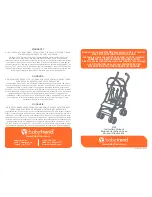
1-12
Cisco Wireless LAN Controller Configuration Guide
OL-9141-03
Chapter 1 Overview
Cisco UWN Solution WLANs
•
The 4402 controller connects to the network using one or two fiber-optic Gigabit Ethernet cables,
and the 4404 controller connects to the network using up to four fiber-optic Gigabit Ethernet cables:
two redundant Gigabit Ethernet connections to bypass single network failures.
•
The controllers in the Wireless Services Module (WiSM), installed in a Cisco Catalyst 6500 Series
Switch, connect to the network through switch ports on the switch.
•
The Wireless LAN Controller Network Module, installed in a Cisco Integrated Services Router,
connects to the network through the ports on the router.
•
The controller in the Catalyst 3750G Integrated Wireless LAN Controller Switch connects to the
network through the ports on the switch.
•
Cisco lightweight access points connects to the network using 10/100BASE-T Ethernet cables. The
standard CAT-5 cable can also be used to conduct power for the Cisco 1000 series lightweight access
points from a network device equipped with Power over Ethernet (PoE) capability. This power
distribution plan can be used to reduce the cost of individual AP power supplies and related cabling.
Cisco UWN Solution WLANs
The Cisco UWN Solution can control up to 16 WLANs for lightweight access points. Each WLAN has
a separate WLAN ID (1 through 16), a separate WLAN SSID (WLAN name), and can be assigned unique
security policies. Using software release 3.2 and later you can configure both static and dynamic WEP
on the same WLAN.
The lightweight access points broadcast all active Cisco UWN Solution WLAN SSIDs and enforce the
policies defined for each WLAN.
Note
Cisco recommends that you assign one set of VLANs for WLANs and a different set of VLANs for
management interfaces to ensure that controllers operate with optimum performance and ease of
management.
If management over wireless is enabled across Cisco UWN Solution, the operator can manage the
System across the enabled WLAN using CLI and Telnet, http/https, and SNMP.
To configure the WLANs, refer to
Chapter 6
.
Identity Networking
Controllers can have the following parameters applied to all clients associating with a particular wireless
LAN: QoS, global or Interface-specific DHCP server, Layer 2 and Layer 3 Security Policies, and default
Interface (which includes physical port, VLAN and ACL assignments).
However, the controllers can also have individual clients (MAC addresses) override the preset wireless
LAN parameters by using MAC Filtering or by Allowing AAA Override parameters. This configuration
can be used, for example, to have all company clients log into the corporate wireless LAN, and then have
clients connect using different QoS, DHCP server, Layer 2 and Layer 3 Security Policies, and Interface
(which includes physical port, VLAN and ACL assignments) settings on a per-MAC Address basis.
When Cisco UWN Solution operators configure MAC Filtering for a client, they can assign a different
VLAN to the MAC Address, which can be used to have operating system automatically reroute the client
to the management interface or any of the operator-defined interfaces, each of which have their own
















































